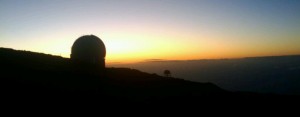Observing from La Palma

The best proto-brown dwarf candidate so far: PR from Spitzer
November 28, 2009
Renovation of the German-Spanish agreement for the future of Calar Alto
December 10, 2010dbarrado
Born in Madrid, Spain, David Barrado completed a degree in physics, specializing in astrophysics, at the Universidad Complutense de Madrid. At this same university he started work on a doctorate that he would go on to complete at the Harvard-Smithsonian Center for Astrophysics (CfA) in Cambridge (USA). He then spent several years as a post-doctoral researcher at a number of institutes in the United States (including as a Fulbright scholar during his time at CfA), Germany (Max-Planck Institut für Astronomie, in Heidelberg) and Spain (Universidad Autónoma de Madrid). David now works at the European Space Astronomy Center (ESAC, Madrid) as a member of the National Technical Aerospace Institute (INTA), part of the Astrobiology Center (CAB), a combined institute made up of INTA and the Center for Higher Scientific Research (CSIC). With the INTA team he led research on the MIRI, an infrared instrument that will fly with the forthcoming space telescope, the JWST. He has also been involved in the development of a number of other astronomical instruments. For two years he was head of the Stellar and Exoplanets Astrophysics Laboratory, as a member of the CAB, and later Director of the Hispano-German Astronomy Center observatory in Calar Alto for three years. His research interests focus on the properties of stars in open star clusters, as well as detecting and characterizing substellar objects and exoplanets. More generally he has specialized in studying the formation of stars and planetary systems using various observational techniques: from visible light to distant infrared, using images and spectroscopes, via both terrestrial and space telescopes. This observation work has seen him publish close to one hundred and fifty articles in prestigious scientific journals. He also combines his research with tireless outreach activities. With Spanish blog, Cuaderno de Bitacora Estelar (see http://www.madrimasd.org/blogs/astrofisica/) has a very large audience.



2 Comments
Thanks for sharing these great photos.
I’m just wondering where ESO would build its E-ELT is La Palma would be chosen as the site of location?
Philip
Hi Philip.
Actually, although I do not have inside information, I believe it is very difficult that ESO will decide to put E-ELT in La Palma. Probably, it wil go to Chile.
However, if the economical crisis finishes soon, and additional money is found, perhaps a second unit could come here. But remember that it is taxpayer money.
Thanks for reading and commenting this blog,
David